Discovering a blood stain on your mattress pad can be disheartening, but it’s a common issue that many people face. Whether from a minor cut, a nosebleed, or a period leak, these stains can seem stubborn and difficult to remove. However, with the right approach and a little bit of patience, you can effectively treat them and restore your mattress pad to its clean, fresh state.
Acting quickly is the key to successfully removing blood stains. The longer a stain sits, the more it sets into the fabric fibers, making it harder to lift. This guide on how to remove blood stain from mattress pad provides a comprehensive, step-by-step process using common household items to tackle these stains head-on, saving you the cost and hassle of replacing your bedding. Let’s walk through the simple yet effective methods to make your mattress pad look as good as new.
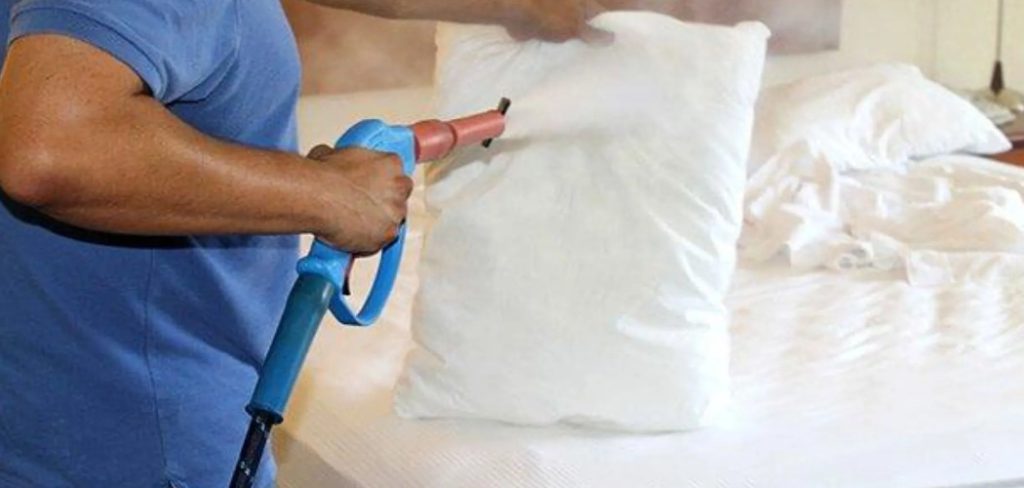
Tools and Materials You’ll Need:
Before you begin, gather the following items to ensure a smooth and effective cleaning process:
- Cold water
- Clean cloths or paper towels
- A small bowl or bucket
- Baking soda
- White vinegar
- Hydrogen peroxide (3% solution)
- Salt
- An old toothbrush or soft-bristle brush
- A spray bottle
- A vacuum cleaner with a hose attachment (optional)
- Mild laundry detergent
7 Simple Step-By-Step Guidelines on How to Remove Blood Stain from Mattress Pad
Step 1: Act Quickly and Blot the Stain
The most critical factor in successfully removing a blood stain is speed. The sooner you can address the spot, the easier it will be to remove completely. Begin by taking the mattress pad off the bed. Immediately grab a clean, dry cloth or a stack of paper towels and gently blot the stained area. The goal is to absorb as much of the excess blood as possible. Avoid rubbing or scrubbing the stain at this stage, as that will only push the blood deeper into the fabric fibers, making it spread and set. Continue blotting with fresh sections of the cloth until you are no longer lifting any liquid.

If the stain has already dried, this initial blotting step won’t be as effective, but it’s still good practice to gently dab the area to remove any loose, flaky residue before applying any cleaning solutions. For fresh stains, this absorption technique is your first line of defense. It significantly reduces the amount of blood you’ll need to treat with cleaning agents later. Remember to apply gentle pressure, working from the outside of the stain inward to prevent it from growing larger. This simple action can make a world of difference in the final outcome.
Step 2: Prepare a Baking Soda Paste
Baking soda is a fantastic, natural cleaning agent that works wonders on protein-based stains like blood. To create a cleaning paste, mix one part baking soda with two parts cold water in a small bowl. The consistency should be a thin, spreadable paste, similar to pancake batter. It’s crucial to use cold water for this mixture and throughout the entire cleaning process. Hot water can “cook” the proteins in the blood, causing the stain to set permanently into the fabric, which is the exact opposite of what you want to achieve.
Once your paste is ready, apply it generously over the entire blood stain, ensuring you cover it completely. Let the paste sit on the stain for at least 30 minutes, but for tougher or older stains, you can leave it on for up to an hour. As the paste dries, it will work to lift the stain from the fabric fibers. You might even see the baking soda turn a brownish color as it absorbs the blood. This simple yet powerful solution is gentle on most fabrics while being tough on stains, making it an ideal choice for your mattress pad.
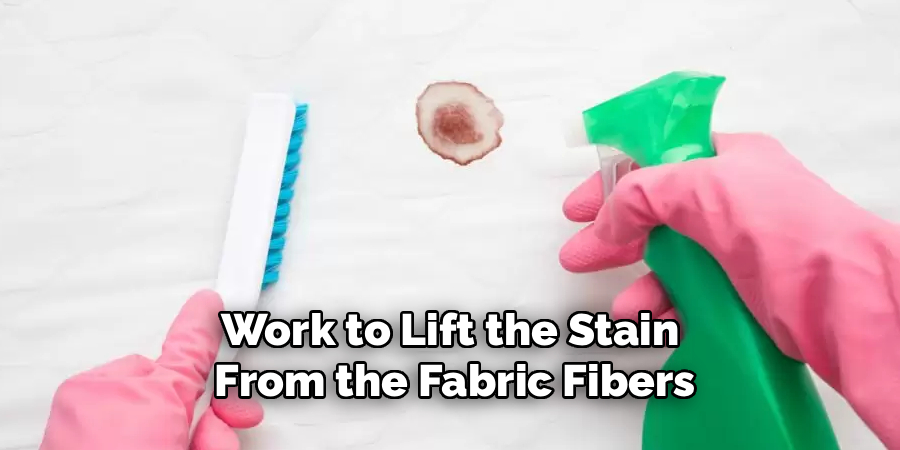
Step 3: Gently Scrub and Remove the Paste
After letting the baking soda paste work its magic for at least 30 minutes, it’s time to gently agitate the area. Use an old toothbrush or a soft-bristled brush to lightly scrub the stain. Move the brush in small, circular motions, concentrating on the stained area. This action helps to break down the blood particles that the baking soda has loosened from the fabric. Be careful not to scrub too aggressively, as you could damage the fibers of your mattress pad. The goal is to work the paste into the stain without causing unnecessary wear and tear on the material.
Once you have finished scrubbing, use a clean, damp cloth (again, using only cold water) to wipe away the baking soda paste. You may need to rinse and wring out the cloth several times to remove all the residue. As you wipe, you should notice that the stain has significantly lightened or, in some cases, disappeared entirely. If a faint stain remains, don’t worry; there are still more steps you can take to tackle what’s left. Inspect the area closely before moving on to the next method.
Step 4: Apply Hydrogen Peroxide for Stubborn Stains
If the baking soda paste didn’t completely remove the stain, hydrogen peroxide is your next powerful tool. This common household antiseptic is an oxidizing agent that effectively breaks down blood. However, it can have a mild bleaching effect, so it’s essential to perform a spot test on an inconspicuous area of your mattress pad first, such as a corner or the underside. Apply a small drop and wait a few minutes to ensure it doesn’t cause any discoloration before proceeding with treating the stain.
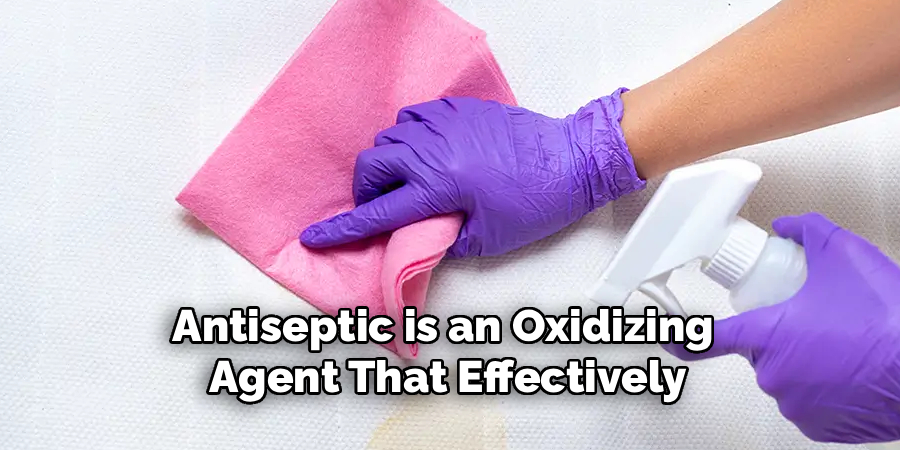
Once you’ve confirmed it’s safe to use, apply a small amount of 3% hydrogen peroxide directly onto the remaining stain. You will immediately see it start to bubble and fizz—this is a chemical reaction as it breaks down the components of the blood. Let it sit and work for about 5 to 10 minutes. Use a clean, dry cloth to blot the area and absorb the liquid and the lifted stain. Be careful not to oversaturate the mattress pad, as excess moisture can lead to mold or mildew growth if not dried properly.
Step 5: Try a Vinegar or Salt Solution
For those who prefer to avoid hydrogen peroxide or if the stain persists, a white vinegar or salt solution offers another effective alternative. White vinegar is a natural acid that can dissolve stains. To use it, apply a small amount of undiluted white vinegar directly onto the stain using a clean cloth or a spray bottle. Let it soak for about 10 minutes, then blot the area firmly with a clean, dry towel to lift the moisture and the stain. The acidity of the vinegar works to break down the blood without being overly harsh on the fabric.
Alternatively, a salt paste can be just as effective. Salt is a natural dehydrating agent that helps pull the stain out of the fibers. Create a thick paste by mixing salt with a small amount of cold water. Apply this paste directly onto the stain, covering it completely. Let the paste dry, which may take an hour or more. Once it’s dry and crusty, use a soft brush or the hose attachment of a vacuum cleaner to scrape or vacuum away the salt residue. This method is particularly good for older, more stubborn stains that need a bit more abrasive power.
Step 6: Rinse the Area Thoroughly
After you have successfully removed the stain using one or more of the methods above, it is vital to rinse the treated area to remove any leftover cleaning solution. Any residue from baking soda, vinegar, or hydrogen peroxide can potentially damage the fabric over time or attract more dirt. To do this, take a clean cloth, dampen it with cold water, and wring it out so it’s not dripping wet. Gently blot the area where you applied the cleaning products.
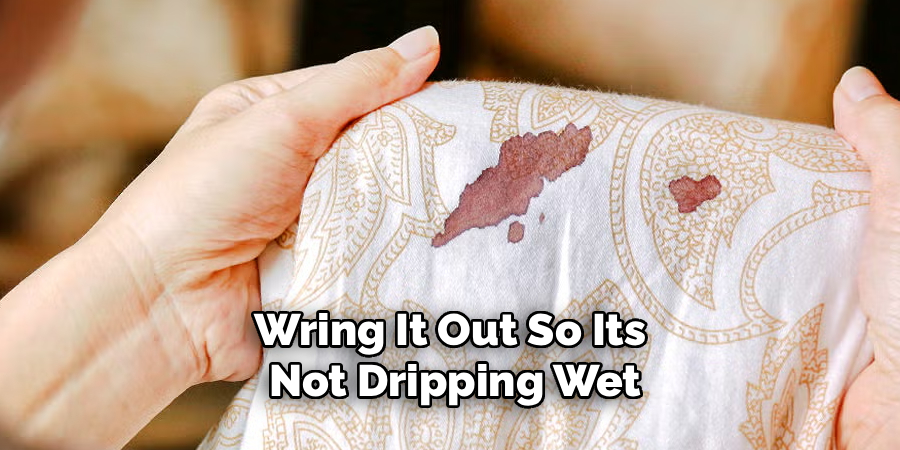
Repeat this process several times with a freshly rinsed cloth to ensure you have removed all traces of the cleaning agents. This step is just as important as the cleaning itself, as it restores the fabric’s pH balance and prepares it for drying. Again, avoid oversaturating the mattress pad with water. Your goal is simply to “rinse” the surface without soaking the padding underneath. Proper rinsing ensures that your mattress pad will be clean, fresh, and free from any chemical residue once it’s dry.
Step 7: Allow the Mattress Pad to Air Dry Completely
The final and most crucial step is to ensure the mattress pad is completely dry before putting it back on your bed. Any lingering moisture can create a breeding ground for mold and mildew, which can cause unpleasant odors and health issues. The best way to dry your mattress pad is to let it air dry. If possible, hang it outside on a clothesline on a sunny, breezy day. The sunlight acts as a natural disinfectant and can help further lighten any faint, lingering discoloration.
If outdoor drying isn’t an option, you can hang it indoors in a well-ventilated room. Pointing a fan directly at the damp area can significantly speed up the drying process. You can also lay it flat over a few chairs to allow for good air circulation on all sides. Do not use a machine dryer unless the care label specifically says it’s safe, as the high heat can damage the waterproof lining or cause the padding to clump. Be patient and wait until it is 100% dry to the touch before placing it back on your mattress.
Following these steps on how to remove blood stain from mattress pad, you should be able to effectively remove any blood stains and restore your mattress pad to its clean and fresh state.
Do You Need To Use Professionals?
For most minor blood stains, a DIY approach using the methods described above is highly effective and sufficient. However, there are certain situations where calling a professional cleaner might be the best course of action. If the stain is exceptionally large, has been sitting for a very long time, or has soaked through the pad and onto the mattress itself, a professional will have access to industrial-grade equipment and specialized enzymatic cleaners that can provide a deeper clean.
Additionally, if your mattress pad is made of a delicate material like silk or wool, it’s safer to trust an expert to avoid causing damage.
How Much Will It Cost?
The cost of cleaning a blood stain from a mattress pad can vary significantly. If you opt for the DIY method, the cost is minimal, likely under $10 for household supplies like baking soda, vinegar, or hydrogen peroxide, which you may already own. If you decide to hire a professional upholstery or mattress cleaning service, the cost will be higher.
Professionals may charge a flat fee for a single stain treatment, which could range from $50 to $100, or they may include it as part of a full mattress cleaning service, which can cost anywhere from $75 to $200, depending on your location and the size of the mattress.

Frequently Asked Questions
Q1: Can You Use Bleach To Remove Blood Stains?
A1: It is strongly advised not to use chlorine bleach on blood stains. Bleach can react with the proteins in blood, causing the stain to turn yellow and potentially set it permanently. Furthermore, bleach is a harsh chemical that can weaken and damage the fibers of your mattress pad, especially if it has a waterproof layer. It’s much safer and more effective to stick with gentler options like hydrogen peroxide, baking soda, or vinegar.
Q2: Does Salt And Water Remove Blood Stains?
A2: Yes, a paste made from salt and cold water is a very effective method for removing blood stains. Salt is a natural dehydrating agent that works to lift and pull the stain out of the fabric fibers. By creating a thick paste, applying it to the stain, and letting it dry completely, the salt crystals absorb the blood. Once dry, you can scrape or vacuum the residue away, often taking the stain with it. This technique is particularly useful for older, dried-on stains.
Q3: How Does Hydrogen Peroxide Remove Blood?
A3: Hydrogen peroxide works through a process of oxidation. Blood contains an enzyme called catalase, and when hydrogen peroxide comes into contact with it, a chemical reaction occurs, breaking down the peroxide into water and oxygen gas. This reaction is what you see as fizzing or bubbling. This process also breaks down the other components of blood, including hemoglobin, which gives blood its color. The bubbling action helps lift the stain particles from the fabric, making them easy to blot away.
Q4: Will A Washing Machine Remove Blood Stains From A Mattress Pad?
A4: A washing machine can help, but it should not be your first step. It is essential to pre-treat the blood stain using one of the methods described above before putting the mattress pad in the wash. If you simply toss it in the machine, especially with warm or hot water, you risk setting the stain permanently. After pre-treating, you can wash the mattress pad according to its care label instructions, always using a cold water cycle and a mild detergent.
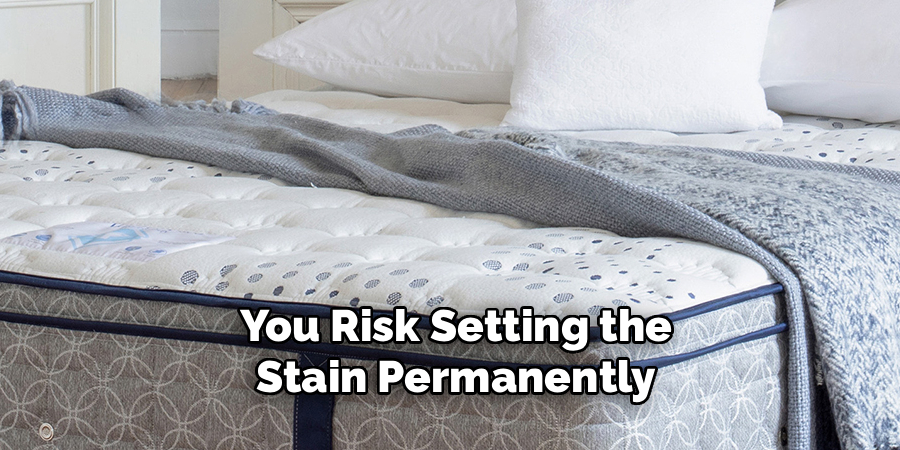
Conclusion
Removing blood stains from a mattress pad might seem like a formidable task, but it’s entirely manageable with the right knowledge and tools. By acting fast, using cold water, and applying simple household ingredients like baking soda, hydrogen peroxide, or vinegar, you can effectively break down and lift even stubborn stains. The key is a patient, step-by-step approach—blotting, treating, rinsing, and drying properly.
Following these guidelines on how to remove blood stain from mattress pad not only saves your mattress pad but also extends its life and maintains a hygienic sleeping environment. While professional help is an option for severe cases, these DIY methods are powerful, inexpensive, and readily available. With a little effort, you can conquer blood stains and ensure your bedding remains fresh, clean, and comfortable for years to come.
About
Construct Fixes is a distinguished figure in the world of Diy design, with a decade of expertise creating innovative and sustainable Diy solutions.
His professional focus lies in merging traditional craftsmanship with modern manufacturing techniques,
fostering designs that are both practical and environmentally conscious. As the author of diy,
constructfixes delves into the art and science of construction-making, inspiring artisans and industry professionals alike.
Education RMIT University
(Melbourne, Australia) Associate Degree in Design (Construct Fixes) Focus on sustainable design, industry-driven projects,
and practical craftsmanship. Gained hands-on experience with traditional and digital manufacturing tools, such as CAD and CNC software.
Nottingham Trent University
(United Kingdom) Bachelor’s in constructfixes.com and Product Design (Honors) Specialized in product design with a focus on blending creativity with production
techniques. Participated in industry projects, working with companies like John Lewis and Vitsoe to gain real-world insights.
Publications and Impact
In diy, Construct Fixes his insights on indoor design processes, materials, and strategies for efficient production.
His writing bridges the gap between artisan knowledge and modern industry needs, making it a must-read for both budding designers and seasoned professionals.
